Abstract
The prevalence of ischaemic heart disease was determined by an administered questionnaire and electrocardiography in 7735 men aged 40-59 years drawn at random from general practices in 24 British towns. Overall, one quarter of these men had some evidence of ischaemic heart disease on questionnaire or electrocardiogram or both. On questionnaire, 14% of men had possible myocardial infarction or angina, with considerable overlap of the two syndromes. The prevalence of possible myocardial infarction combined with angina and of definite angina only showed a fourfold increase over the age range studied. Electrocardiographic evidence of ischaemic heart disease (definite or possible) was present in 15% of men, there being myocardial infarction in 4.2% and myocardial ischaemia in 10.3%. Electrocardiographic evidence of myocardial infarction increased fourfold over the age range studied. There was considerable overlap of questionnaire and electrocardiographic evidence of ischaemic heart disease. Nevertheless, more than half of those with possible myocardial infarction combined with angina had no resting electrocardiographic evidence of ischaemic heart disease, and half of those with definite myocardial infarction on electrocardiogram had no history of chest pain at any time. This national population based study strongly suggests that the prevalence of ischaemic heart disease in middle aged British men is greater than has been indicated by previous studies based on occupational groups.
Full text
PDF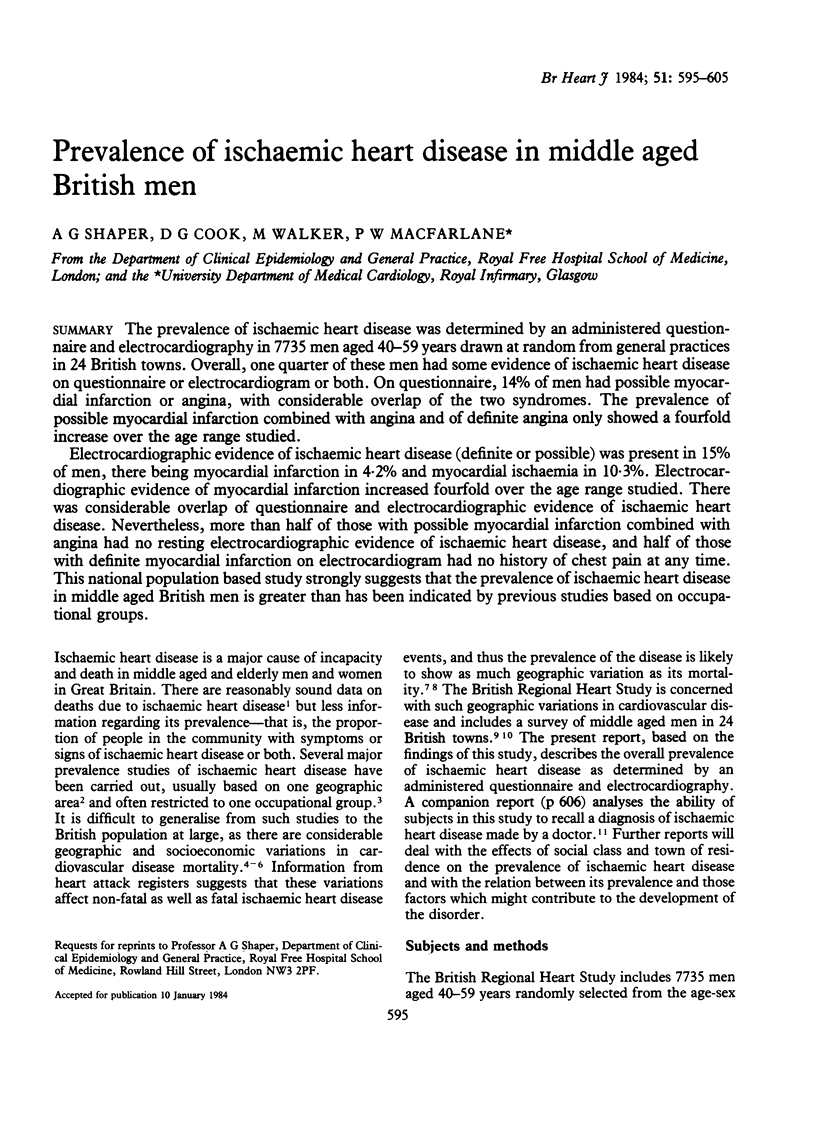
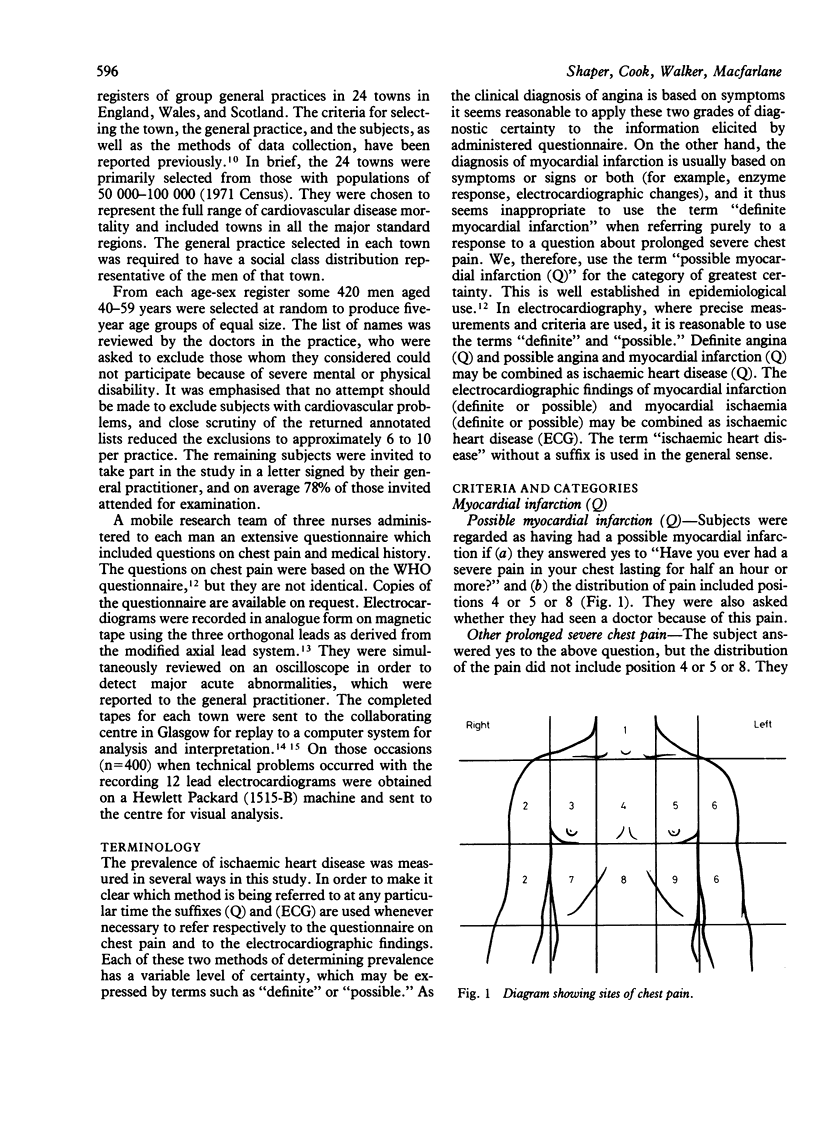
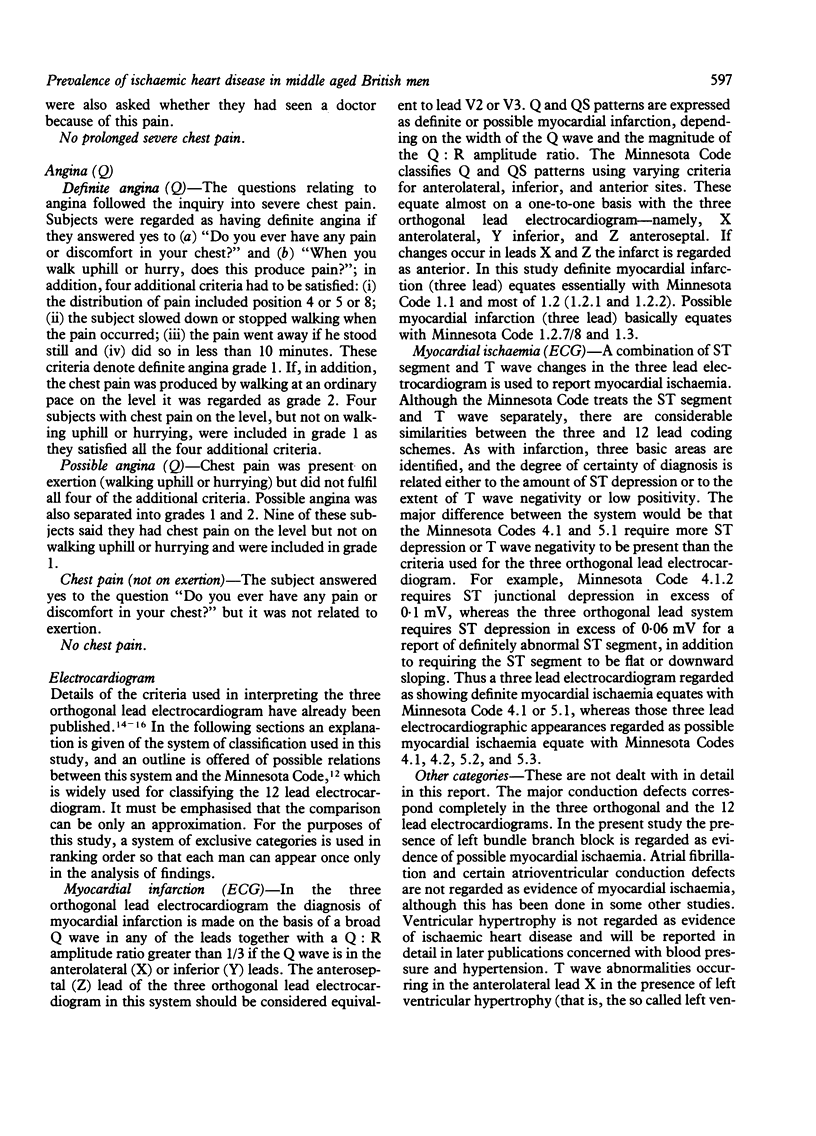
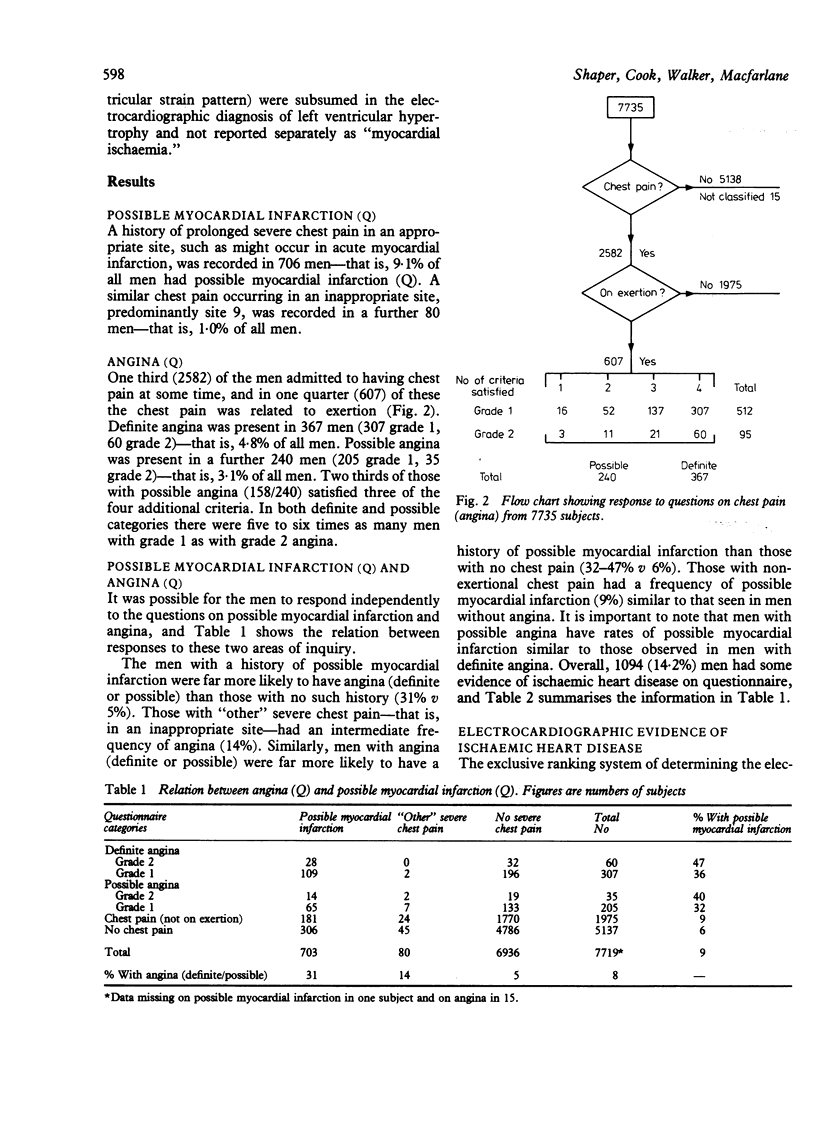
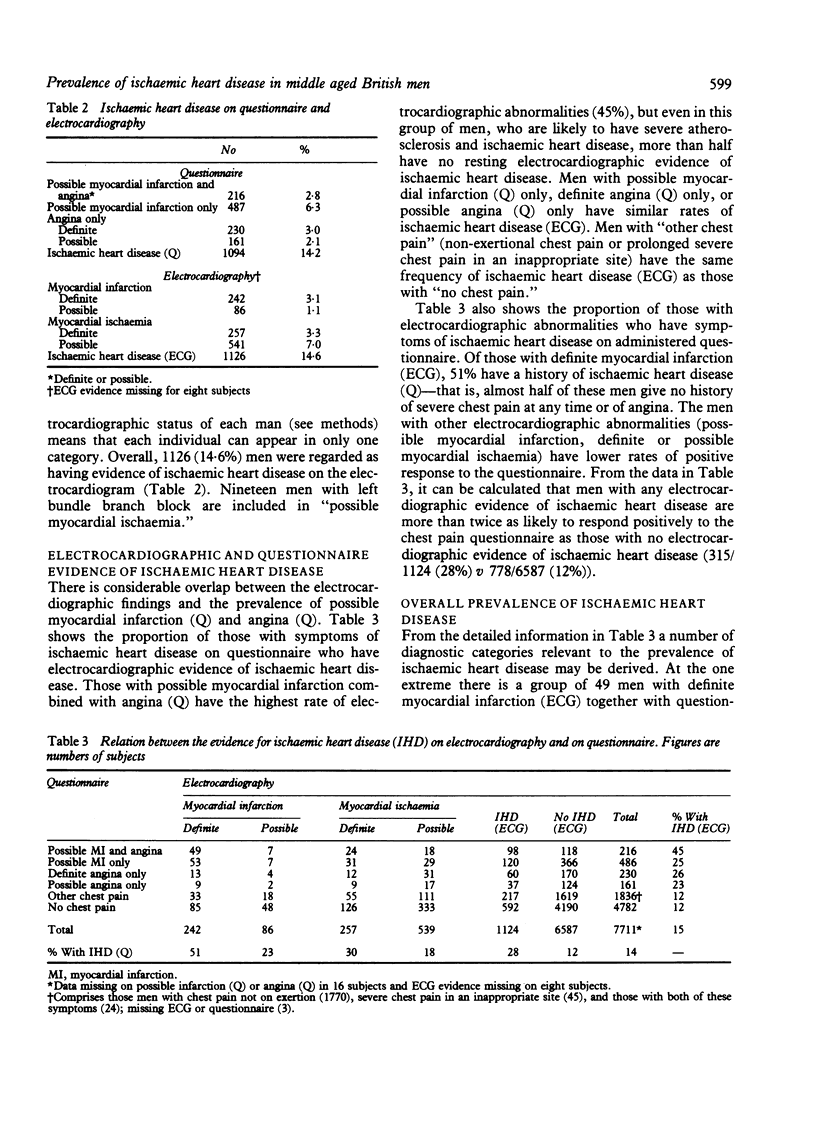
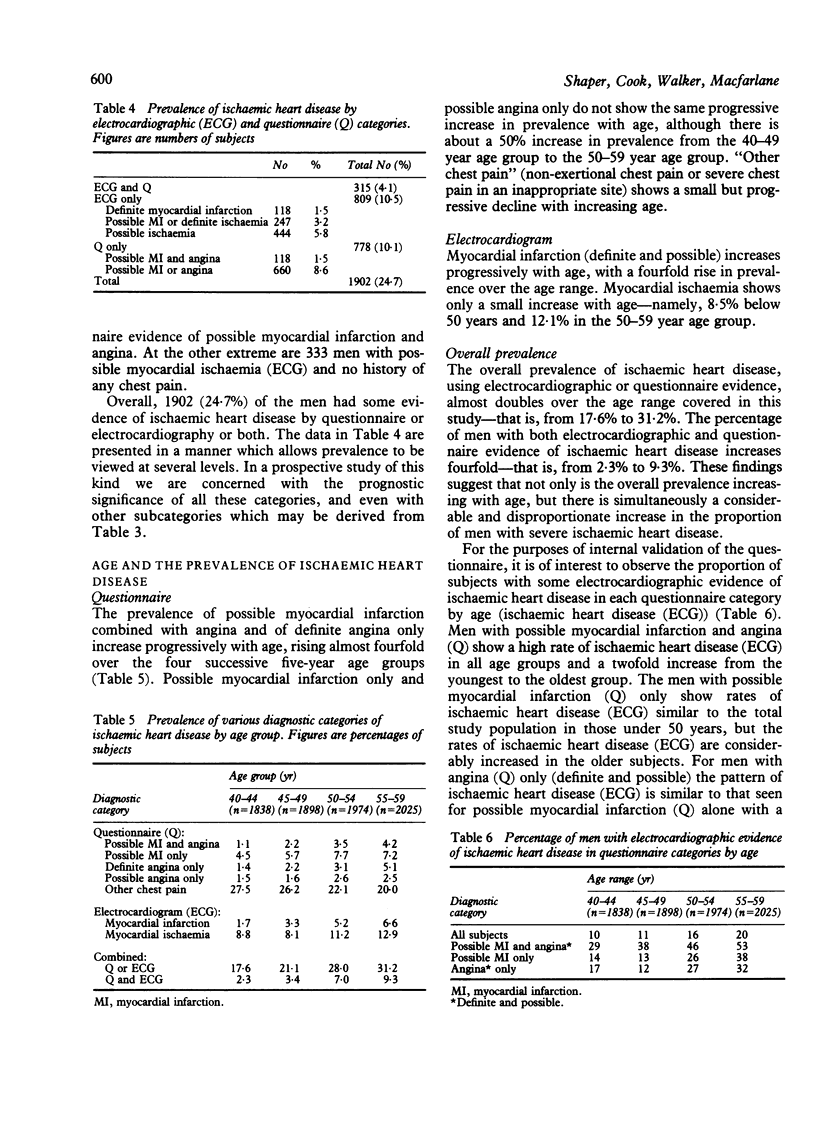
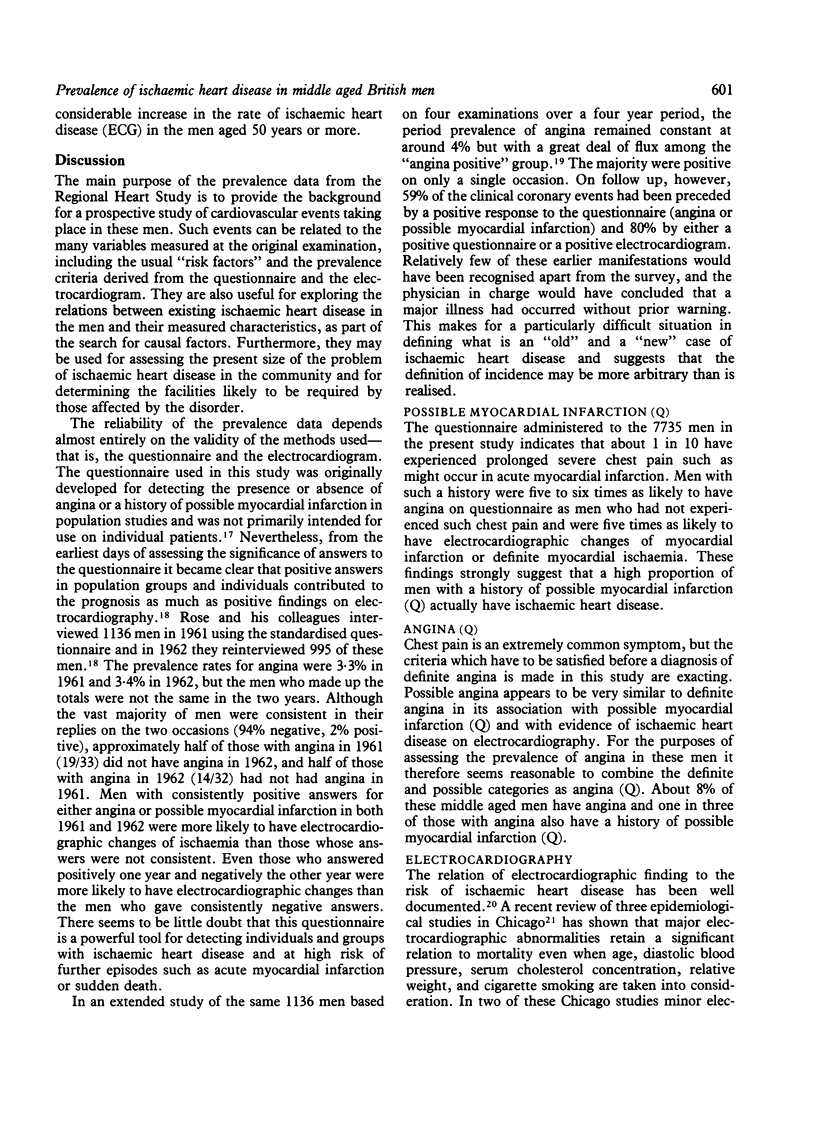
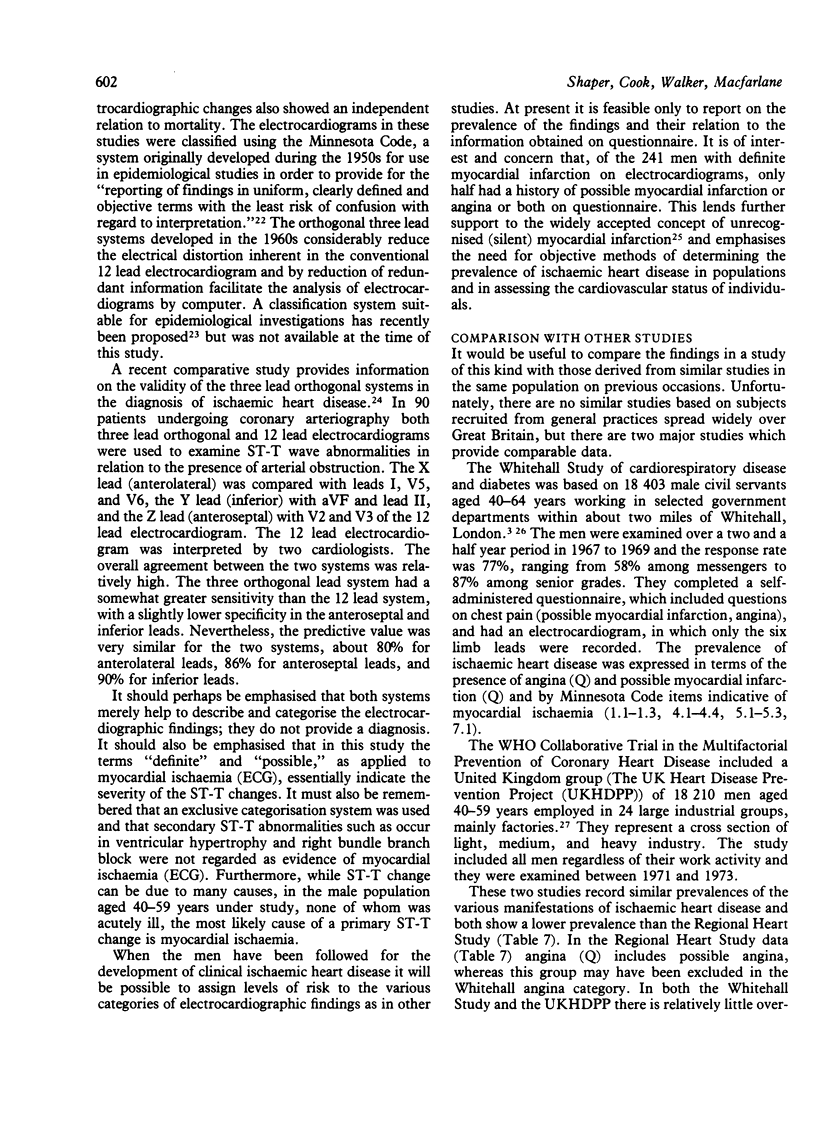
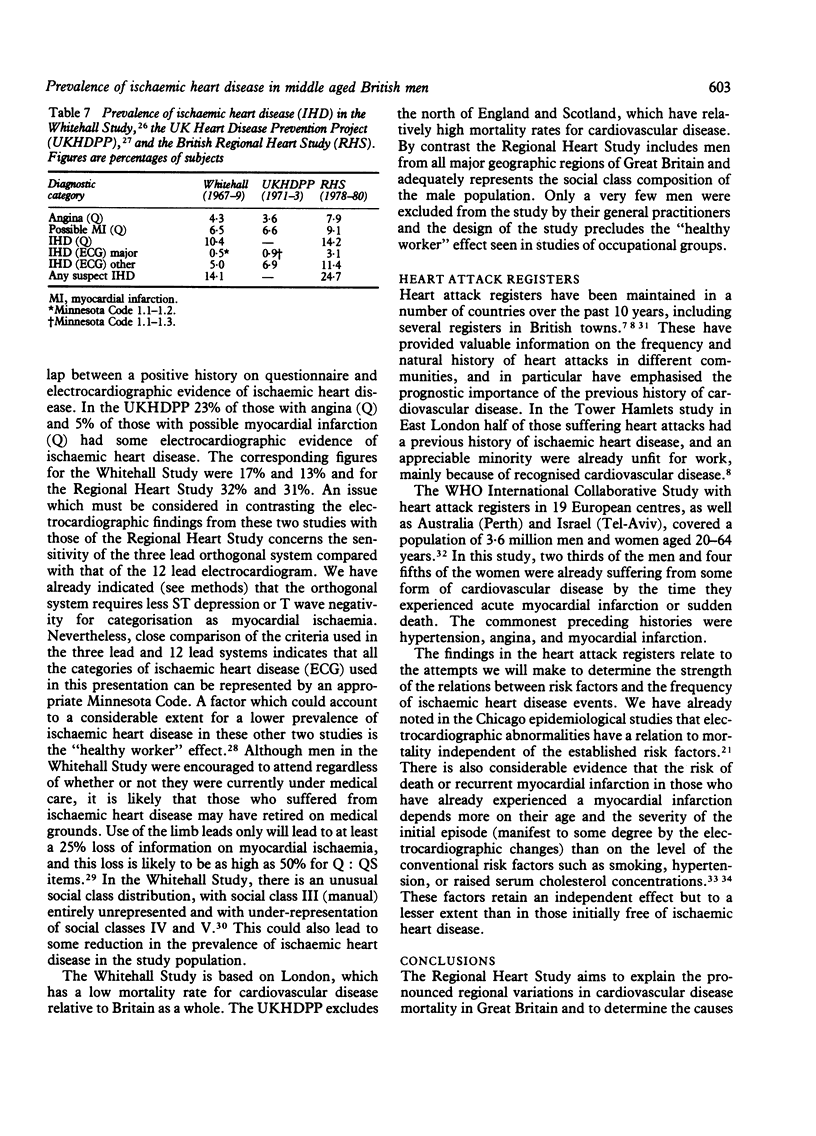
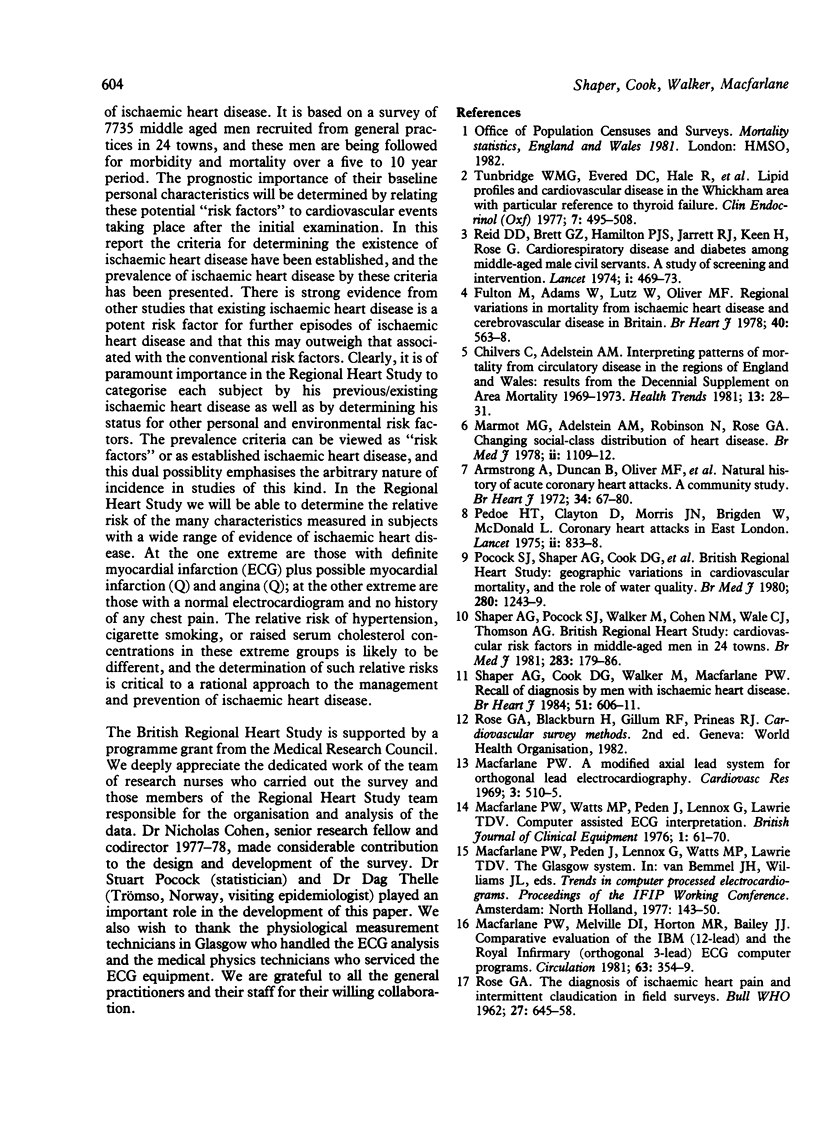
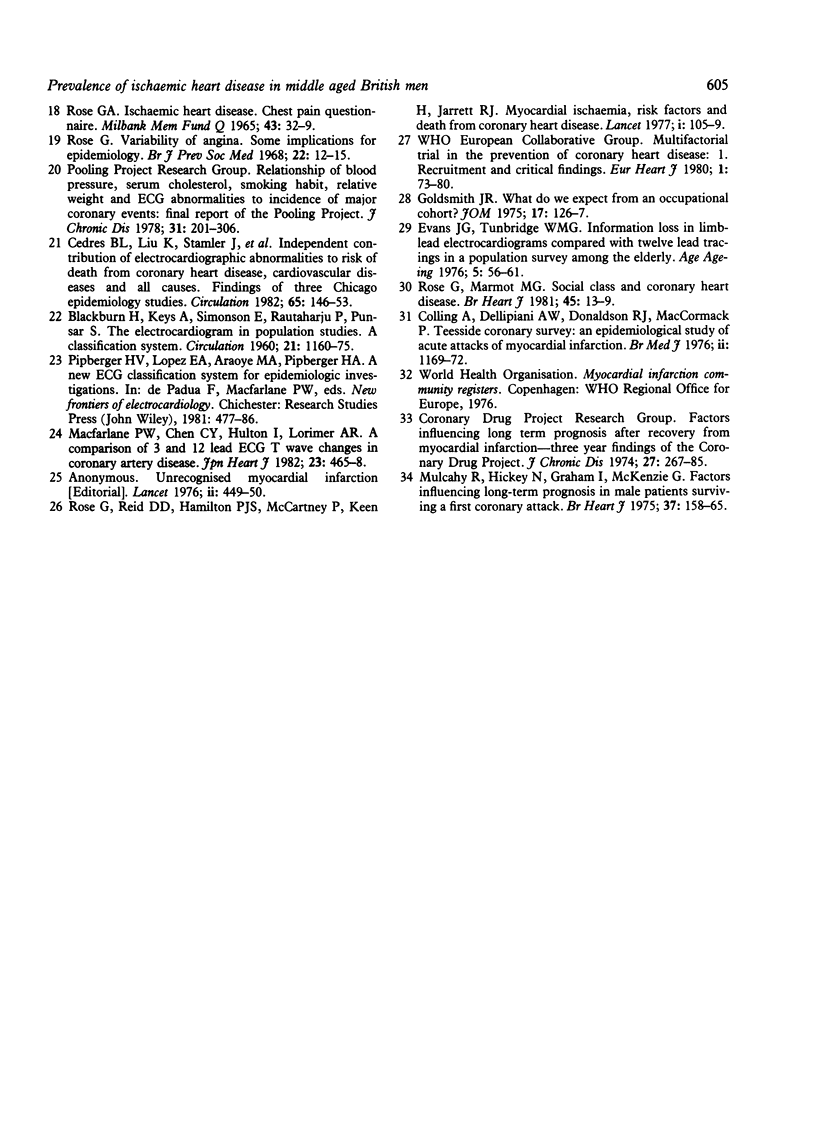
Selected References
These references are in PubMed. This may not be the complete list of references from this article.
- Armstrong A., Duncan B., Oliver M. F., Julian D. G., Donald K. W., Fulton M., Lutz W., Morrison S. L. Natural history of acute coronary heart attacks. A community study. Br Heart J. 1972 Jan;34(1):67–80. doi: 10.1136/hrt.34.1.67. [DOI] [PMC free article] [PubMed] [Google Scholar]
- BLACKBURN H., KEYS A., SIMONSON E., RAUTAHARJU P., PUNSAR S. The electrocardiogram in population studies. A classification system. Circulation. 1960 Jun;21:1160–1175. doi: 10.1161/01.cir.21.6.1160. [DOI] [PubMed] [Google Scholar]
- Cedres B. L., Liu K., Stamler J., Dyer A. R., Stamler R., Berkson D. M., Paul O., Lepper M., Lindberg H. A., Marquardt J. Independent contribution of electrocardiographic abnormalities to risk of death from coronary heart disease, cardiovascular diseases and all causes. Findings of three Chicago epidemiologic studies. Circulation. 1982 Jan;65(1):146–153. doi: 10.1161/01.cir.65.1.146. [DOI] [PubMed] [Google Scholar]
- Colling A., Dellipiani A. W., Donaldson R. J., MacCormack P. Teesside coronary survey: an epidemiological study of acute attacks of myocardial infarction. Br Med J. 1976 Nov 13;2(6045):1169–1172. doi: 10.1136/bmj.2.6045.1169. [DOI] [PMC free article] [PubMed] [Google Scholar]
- Evans J. G., Tunbridge W. M. Information loss in limb-lead electrocardiograms compared with twelve-lead tracings in a population survey among the elderly. Age Ageing. 1976 Feb;5(1):56–61. doi: 10.1093/ageing/5.1.56. [DOI] [PubMed] [Google Scholar]
- Fulton M., Adams W., Lutz W., Oliver M. F. Regional variations in mortality from ischaemic heart and cerebrovascular disease in Britain. Br Heart J. 1978 May;40(5):563–568. doi: 10.1136/hrt.40.5.563. [DOI] [PMC free article] [PubMed] [Google Scholar]
- Goldsmith J. R. Letter: What do we expect from an occupational cohort? J Occup Med. 1975 Feb;17(2):126–131. doi: 10.1097/00043764-197502000-00016. [DOI] [PubMed] [Google Scholar]
- Macfarlane P. W. A modified axial lead system for orthogonal lead electrocardiography. Cardiovasc Res. 1969 Oct;3(4):510–515. doi: 10.1093/cvr/3.4.510. [DOI] [PubMed] [Google Scholar]
- Macfarlane P. W., Melville D. I., Horton M. R., Bailey J. J. Comparative evaluation of the IBM (12-lead) and Royal Infirmary (orthogonal three-lead) ECG computer programs. Circulation. 1981 Feb;63(2):354–359. doi: 10.1161/01.cir.63.2.354. [DOI] [PubMed] [Google Scholar]
- Marmot M. G., Adelstein A. M., Robinson N., Rose G. A. Changing social-class distribution of heart disease. Br Med J. 1978 Oct 21;2(6145):1109–1112. doi: 10.1136/bmj.2.6145.1109. [DOI] [PMC free article] [PubMed] [Google Scholar]
- Mulcahy R., Hickey N., Graham I., McKenzie G. Factors influenceing long-term prognosis in male patients surviving a first coronary attack. Br Heart J. 1975 Feb;37(2):158–165. doi: 10.1136/hrt.37.2.158. [DOI] [PMC free article] [PubMed] [Google Scholar]
- Pedoe H. T., Clayton D., Morris J. N., Brigden W., McDonald L. Coronary heart-attacks in East London. Lancet. 1975 Nov 1;2(7940):833–838. doi: 10.1016/s0140-6736(75)90233-0. [DOI] [PubMed] [Google Scholar]
- Pocock S. J., Shaper A. G., Cook D. G., Packham R. F., Lacey R. F., Powell P., Russell P. F. British Regional Heart Study: geographic variations in cardiovascular mortality, and the role of water quality. Br Med J. 1980 May 24;280(6226):1243–1249. doi: 10.1136/bmj.280.6226.1243. [DOI] [PMC free article] [PubMed] [Google Scholar]
- ROSE G. A. ISCHEMIC HEART DISEASE. CHEST PAIN QUESTIONNAIRE. Milbank Mem Fund Q. 1965 Apr;43:32–39. [PubMed] [Google Scholar]
- ROSE G. A. The diagnosis of ischaemic heart pain and intermittent claudication in field surveys. Bull World Health Organ. 1962;27:645–658. [PMC free article] [PubMed] [Google Scholar]
- Reid D. D., Brett G. Z., Hamilton P. J., Jarrett R. J., Keen H., Rose G. Cardiorespiratory disease and diabetes among middle-aged male Civil Servants. A study of screening and intervention. Lancet. 1974 Mar 23;1(7856):469–473. doi: 10.1016/s0140-6736(74)92783-4. [DOI] [PubMed] [Google Scholar]
- Rose G., Hamilton P. S., Keen H., Reid D. D., McCartney P., Jarrett R. J. Myocardial ischaemia, risk factors and death from coronary heart-disease. Lancet. 1977 Jan 15;1(8003):105–109. doi: 10.1016/s0140-6736(77)91701-9. [DOI] [PubMed] [Google Scholar]
- Rose G., Marmot M. G. Social class and coronary heart disease. Br Heart J. 1981 Jan;45(1):13–19. doi: 10.1136/hrt.45.1.13. [DOI] [PMC free article] [PubMed] [Google Scholar]
- Rose G. Variability of angina. Some implications for epidemiology. Br J Prev Soc Med. 1968 Jan;22(1):12–15. doi: 10.1136/jech.22.1.12. [DOI] [PMC free article] [PubMed] [Google Scholar]
- Shaper A. G., Cook D. G., Walker M., Macfarlane P. W. Recall of diagnosis by men with ischaemic heart disease. Br Heart J. 1984 Jun;51(6):606–611. doi: 10.1136/hrt.51.6.606. [DOI] [PMC free article] [PubMed] [Google Scholar]
- Shaper A. G., Pocock S. J., Walker M., Cohen N. M., Wale C. J., Thomson A. G. British Regional Heart Study: cardiovascular risk factors in middle-aged men in 24 towns. Br Med J (Clin Res Ed) 1981 Jul 18;283(6285):179–186. doi: 10.1136/bmj.283.6285.179. [DOI] [PMC free article] [PubMed] [Google Scholar]
- Tunbridge W. M., Evered D. C., Hall R., Appleton D., Brewis M., Clark F., Evans J. G., Young E., Bird T., Smith P. A. Lipid profiles and cardiovascular disease in the Whickham area with particular reference to thyroid failure. Clin Endocrinol (Oxf) 1977 Dec;7(6):495–508. doi: 10.1111/j.1365-2265.1977.tb01341.x. [DOI] [PubMed] [Google Scholar]


